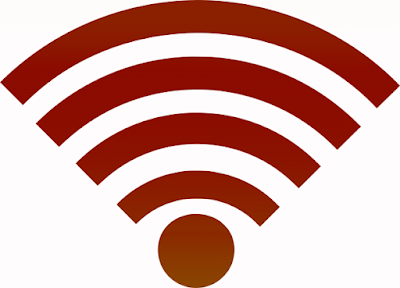After WiFi, the new invention is LiFi (LIFI)
The days of great popularity of WiFi are coming to an end. But fear not, simpler and more advanced wireless technology LiFi is coming. It is said that downloading a movie with 4GB of storage will take just a few seconds. Even standing under an electric lamp!
Light Fidelity is the full form of Lifai. In 2011, Harold Hass, a German-born scientist from the University of Edinburgh in Scotland, invented the first 'LiFi' technology. With this technology, it is possible to exchange information through light. In this case, the technology uses visible light waves as a communication medium. Where WiFi uses invisible radio waves.
As LiFi offers many advantages over WiFi such as higher bandwidth, ease of use, efficiency, and security. So this technology can be most useful for high-speed wireless communication in a particular area. But the surprising thing is that using this technology called LiFi, information can be exchanged from street lights to current automatic technology cars through headlights.
Since the speed of light is very fast, the speed of data exchange in this system is also very fast. At the same time LiFi can be a revolutionary technology in terms of internet usage at home. In the future, it may be seen that the LED lights used in the home simultaneously illuminate the house and contribute to the local network within the house. Even every electric lamp in the house can be used as a LiFi router.
What is LIFI technology?
Like WiFi, LiFi is wireless communication technology. Experts believe that it will become one of the most widely used wireless communication technologies in the future. The key feature of this technology is a fully networked, bidirectional, and high-speed wireless connection.
The most trending domain of wireless communication these days is WiFi. The number of internet users is increasing at a geometric rate every year. And more than that, LiFi will have the advantage of getting high speed, efficiency, and bandwidth.
 |
| wifi-cholunshiki |
How LIFI works
Through this technology, data can be exchanged easily with computers, laptops, and even mobile phones using LED lights. LiFi's data transmission range is 100 times faster than WiFi. This technology can transmit data up to about 224 gigabytes per second, while the maximum speed of WiFi is about 600 megabytes per second. However, this technology also has a significant limitation. Light cannot pass through any wall.
As a result, the customer will be disconnected from the Internet if he leaves the room where the LiFi network is located. However, many see it as an advantage, not as a limitation of Lifeai. As a result, the signal will be limited to a confined area. So data transmitted through light will be much more secure. After stealing the password, no one else can use it.
The LiFi system basically consists of two parts. Transmitter and receiver. The input signal in the transmitter section can be modulated with a specific time. Then transmits data using LED bulbs in the form of 0's and 1's. Here the light of the LED bulb is denoted with 0 and 1.
At the receiver end, a photodiode is used to receive the LED light which amplifies and outputs the signal. On the other hand, the receiver end consists of a photodiode as well as an amplifier. Here, the photodiode LED bulb receives the light and converts it into an electrical signal. Finally, the amplifier receives the signal from the photodiode and gives its more powerful output.
The next part will detail how LiFi works, the differences between LiFi and WiFi, and where this technology will be used. Share the post if you like it.













No comments